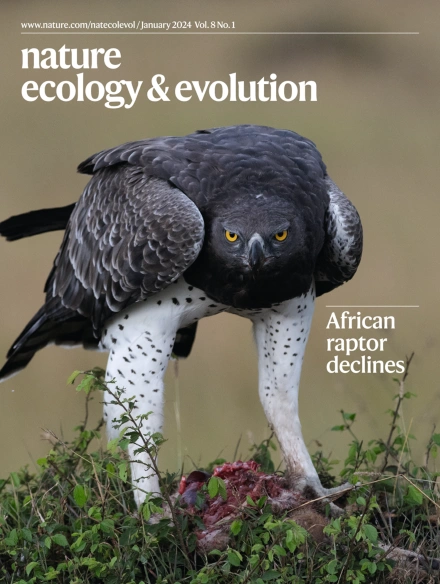Evolutionary divergence between homologous X–Y chromosome genes shapes sex-biased biology
IF 13.9
1区 生物学
Q1 ECOLOGY
引用次数: 0
Abstract
Sex chromosomes are a fundamental aspect of sex-biased biology, but the extent to which homologous X–Y gene pairs (‘the gametologs’) contribute to sex-biased phenotypes remains hotly debated. Although these genes tend to exhibit large sex differences in expression throughout the body (XX females can express both X members, and XY males can express one X and one Y member), there is conflicting evidence regarding the degree of functional divergence between the X and Y members. Here we develop and apply co-expression fingerprint analysis to characterize functional divergence between the X and Y members of 17 gametolog gene pairs across >40 human tissues. Gametolog pairs exhibit functional divergence between the sexes that is driven by divergence between the X versus Y members (assayed in males), and this within-pair divergence is greatest among pairs with evolutionarily distant X and Y members. These patterns reflect that X versus Y gametologs show coordinated patterns of asymmetric coupling with large sets of autosomal genes, which are enriched for functional pathways and gene sets implicated in sex-biased biology and disease. Our findings suggest that the X versus Y gametologs have diverged in function and prioritize specific gametolog pairs for future targeted experimental studies. Based on co-expression fingerprint analysis between homologous genes in the X and Y chromosomes (gametolog pairs) across >40 human tissues, the authors suggest that X and Y gametologs have diverged in function.


同源X-Y染色体基因之间的进化分歧形成了性别偏见生物学
性染色体是性别偏倚生物学的一个基本方面,但同源X-Y基因对(“配子学”)在多大程度上导致性别偏倚表型仍然存在激烈的争论。尽管这些基因在整个身体中往往表现出很大的性别差异(XX雌性可以表达两个X成员,而XY雄性可以表达一个X成员和一个Y成员),但关于X和Y成员之间功能差异的程度,存在相互矛盾的证据。在这里,我们开发并应用共表达指纹分析来表征40个人体组织中17个配子学基因对的X和Y成员之间的功能差异。配子学配对表现出两性之间的功能差异,这是由X和Y成员之间的差异所驱动的(在雄性中进行了分析),而这种配对内部的差异在进化上距离较远的X和Y成员之间最大。这些模式反映了X与Y配子学显示出与大量常染色体基因不对称偶联的协调模式,这些常染色体基因丰富,具有与性别偏见生物学和疾病有关的功能途径和基因集。我们的研究结果表明,X和Y配子学在功能上存在分歧,并优先考虑未来有针对性的实验研究的特定配子学对。
本文章由计算机程序翻译,如有差异,请以英文原文为准。
求助全文
约1分钟内获得全文
求助全文
来源期刊

Nature ecology & evolution
Agricultural and Biological Sciences-Ecology, Evolution, Behavior and Systematics
CiteScore
22.20
自引率
2.40%
发文量
282
期刊介绍:
Nature Ecology & Evolution is interested in the full spectrum of ecological and evolutionary biology, encompassing approaches at the molecular, organismal, population, community and ecosystem levels, as well as relevant parts of the social sciences. Nature Ecology & Evolution provides a place where all researchers and policymakers interested in all aspects of life's diversity can come together to learn about the most accomplished and significant advances in the field and to discuss topical issues. An online-only monthly journal, our broad scope ensures that the research published reaches the widest possible audience of scientists.
 求助内容:
求助内容: 应助结果提醒方式:
应助结果提醒方式:


